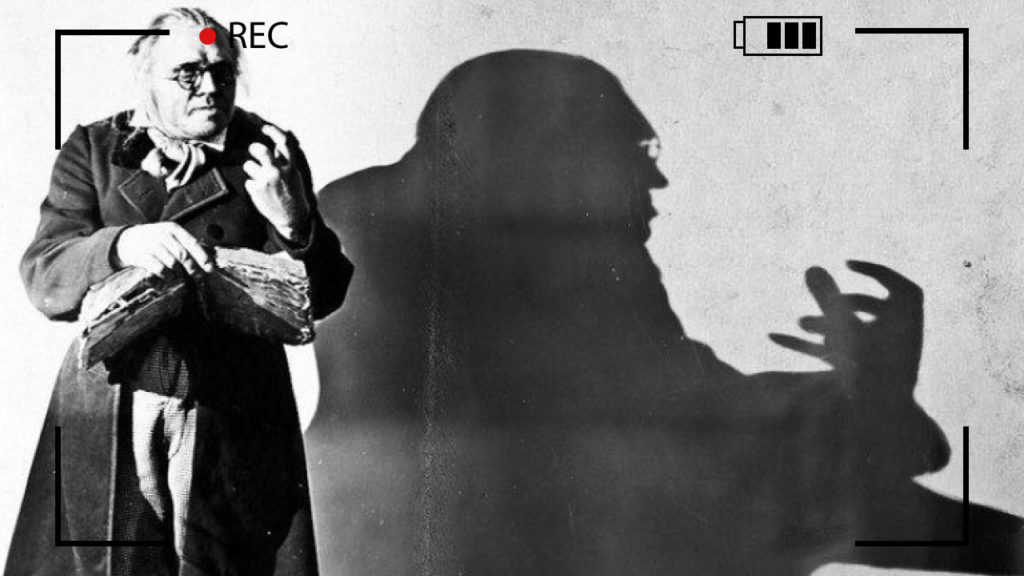
When film became Art
One of the most iconic films in the silent era, is the horror film Das Cabinet des Dr. Caligari. This German expressionists film celebrates its centenarian birthday. It had a huge influence on its genre and is one of the most discussed films in cinema history.
Spoilers ahead!
The story is told from the point of view of Franzis. At the start he is sitting on a bench telling the strange and terrible events that happened in his hometown. He and his best friend Alan go to the carnival and visit an attraction by Dr. Caligari. This doctor is showing a somnambulist: a person, in this case called Cesare, that has been asleep for over twenty years. He only awakes when instructed by Caligari and can answer any question, about the present, the past and the future. When Alan ask how long he would live, he receives the chilling answers: “until dawn”. That night Alan is indeed killed. This wasn’t the first murder to happen in the town and the police is investigating. Franzis as well takes it upon himself to investigate the murder of his friend, hoping to save his fiancé and himself from the same fate. All evidence points towards Dr. Caligari, who also works at the local asylum. But the film ends with a twist when it is revealed that Franzis, who has been telling this story, is actually a patient in the asylum and Dr. Caligari is the physician who has been treating him.
Everything about this film is surreal: The sets are strange, intentionally artificial and in an angular way, with painted shadows. Equally exaggerated are the costumes and make-up. All to show not only the emotions and the mental state of characters, but also as an expression of the then society of post World War Germany and the economic struggles it went through at the time. The country was suffering from the reparation payments to the countries most harmed during the war.
So both artistic as economic reasons created the style of this film. Director Robert Wiene had the set designer painting light beams and shadows on backdrops, and since the sets were confined, odd camera angles were used while filming.
Not only the used style made this an historic and influential film, but also its use of the underlining themes and storytelling (the use of a frame story, with a twist ending) were innovation at the time. With themes like:
- Control and subservience: Dr. Caligari being the only one who can control Cesare, Cesare who obeys him, without mercy without emotion. (Even after the twist we see that Dr. Caligari is still the one in control);
- Power: powerful people are seen to be sitting on very high (and uncomfortable) chairs, the weak are in chains or in a straitjacket.
It isn’t just a story, it is a visual representation of how the German people were suffering during the Interwar period.
Stunning visuals, surreal storytelling accompanied by eerie music. Das Cabinet der Doctor Caligari is a masterpiece from cinematic history.
While you can find the whole film on youtube, I urge you to see the National Film Registry restoration copy that came out in 2014.
















